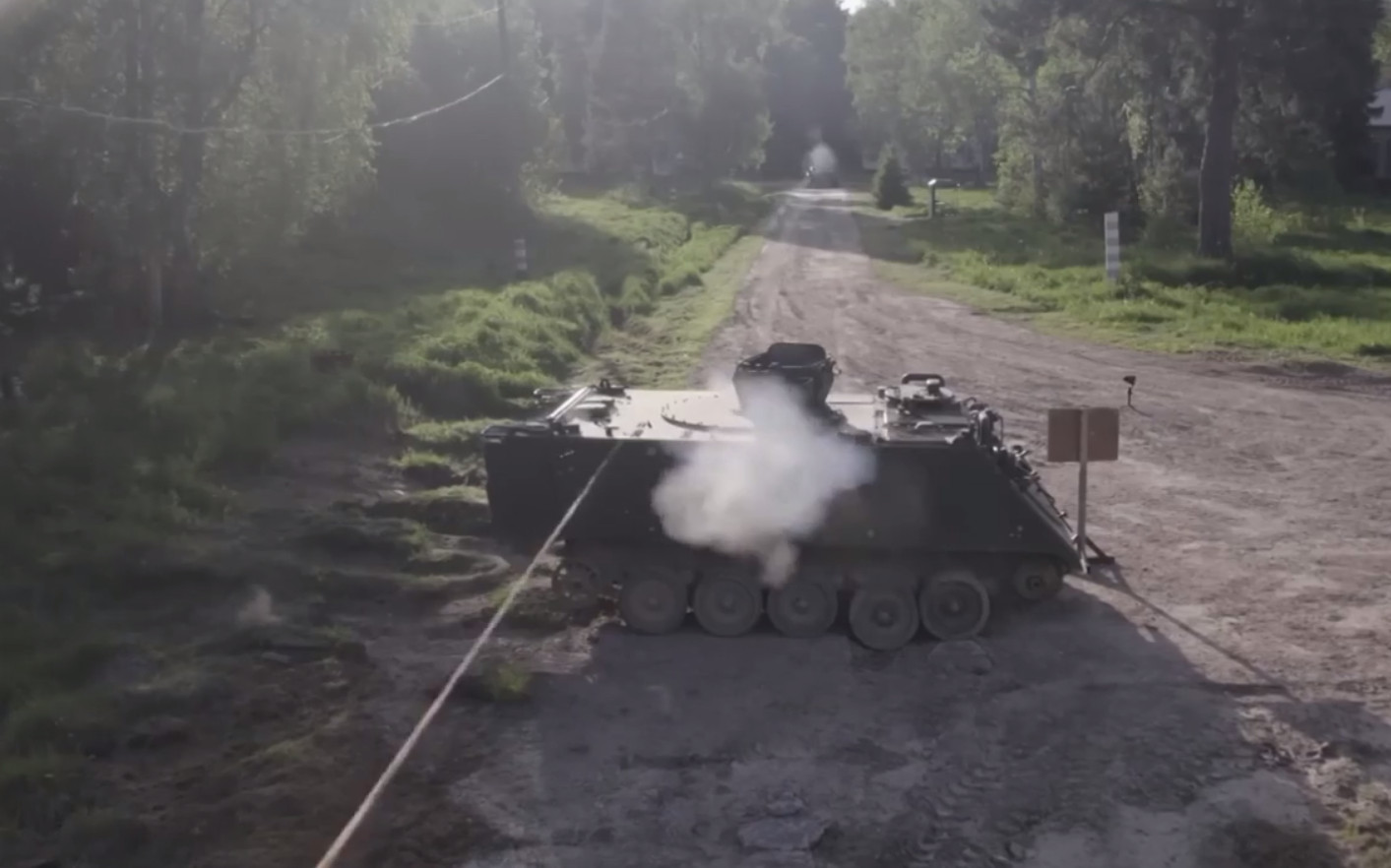
The Russian TV show “Voyennaya priyemka” (Russian propaganda TV show, ed.) aired another bold report on equipment captured in Ukraine.
This time, the Russian military fired at an M113A3 armored personnel carrier (converted back to an APC Sidam-25 anti-aircraft gun) using a BTR-82A 30mm automatic cannon. This was done from a point-blank range of 100 meters.
Predictably, the BTR-82A missed most shots, with only two shells hitting the target. These two shells managed to cover the short distance and penetrate the side of the M113, which is to be expected given the close range.
This demonstration is somewhat embarrassing considering that the Russian BMP-3, touted as having no analogues, has similar aluminum sides with a thickness of 43 mm. It’s important to note that the M113 is an APC, whereas the BMP-3 is an IFV, marketed as a competitor to the Bradley!
The purpose of this demonstration remains unclear. It was evidently more of a spectacle than a genuine test.
The propagandists also inadvertently highlighted a major flaw of the BTR-82A gun: its extremely low accuracy.

In fact, the armor protection parameters of the M113 were studied long ago by the Soviet Union during the Vietnam War. This analysis was conducted by the 38th Research Institute, and the findings were also published on the btvt.info website.
The protection characteristics of the M113 armored personnel carrier, whose hull is welded from rolled sheets of aluminum alloy, are detailed in the table below.
| Designation | Thickness, mm | Obliquity of armor plate, deg | 14,5 мм | 12,7 мм | 7,62 мм | |||
| Distance, m | Approach angle | Distance, m | Approach angle | Distance, m | Approach angle | |||
| Upper glacis plate | 38 | 45 | 400 | 0 | No penetration | 0 | No penetration | 0 |
| Lower glacis plate | 38 | 30 | 800 | 0 | 160 | 0 | 0 | |
| Hull above fender | 43 | 0 | 100 | 42 | 100 | 72 | 100 | 90 |
| 400 | 50 | 250 | 90 | |||||
| 800 | 75 | |||||||
| 850 | 90 | |||||||
| Below fender plate | 31 | 0 | 100 | 34 | 100 | 46 | 100 | 56 |
| 400 | 48 | 400 | 54 | 350 | 90 | |||
| 800 | 47 | 800 | 90 | |||||
| 1000 | 54 | |||||||
The body armor parts of the M113, which serve different purposes and have varying thicknesses, are constructed from aluminum alloy designated as 5083 in the United States. This alloy is known for its excellent weldability, with a tensile strength of approximately 30 kgf/mm², and it does not require additional heat treatment.
The primary alloying element in this aluminum alloy is Magnesium (Mg), with a content ranging from 4.5% to 5.0%. It also contains Manganese (Mn) in the range of 0.6% to 0.8%, Chromium (Cr) up to 0.1%, and Titanium (Ti) up to 0.1%. The chemical composition of the alloy, expressed as a percentage, includes aluminum as the base element.
All welds on the armored parts are made without additional reinforcement or further processing of the weld bead. The seam width does not exceed 12 mm. At junction points where armor plates meet, one plate typically has a sample to halt the second sheet.
Підтримати нас можна через:
Приват: 5169 3351 0164 7408 PayPal - [email protected] Стати нашим патроном за лінком ⬇
Subscribe to our newsletter
or on ours Telegram
Thank you!!
You are subscribed to our newsletter